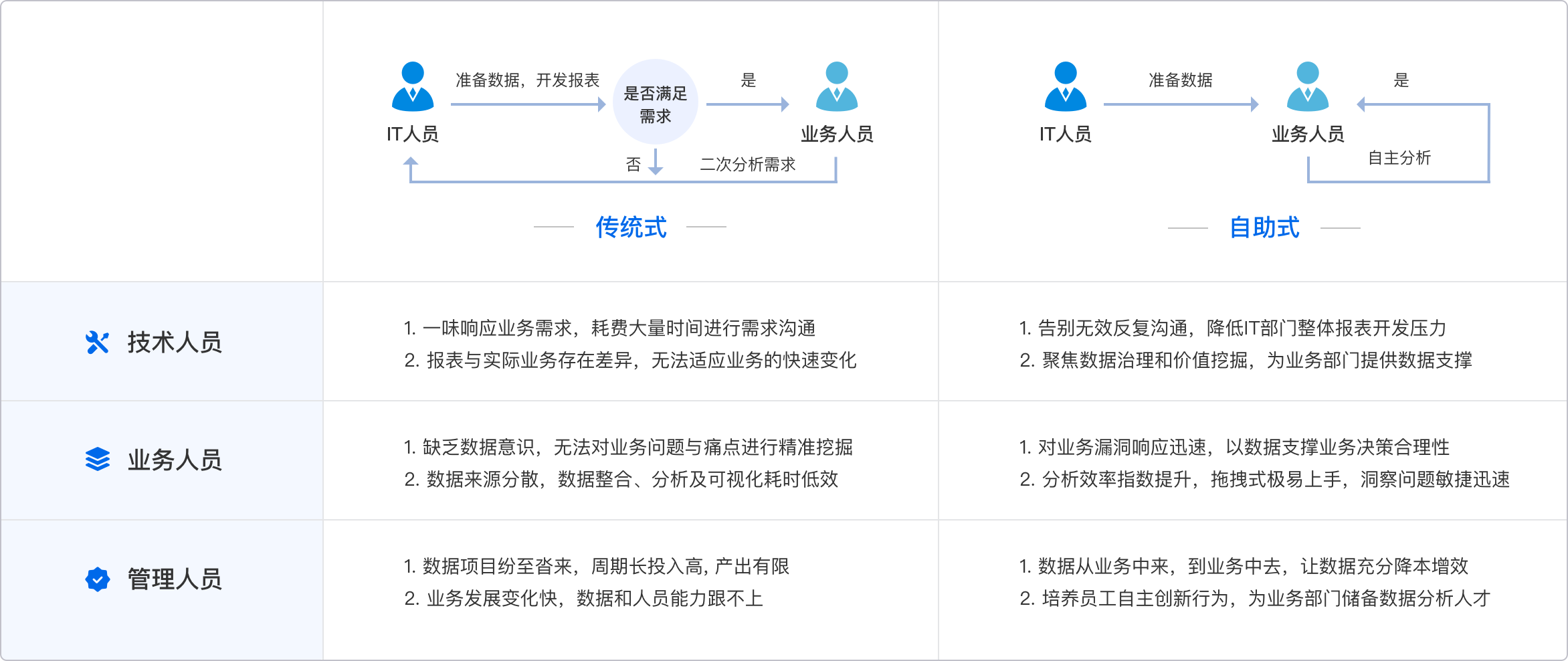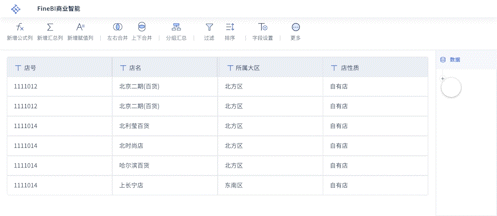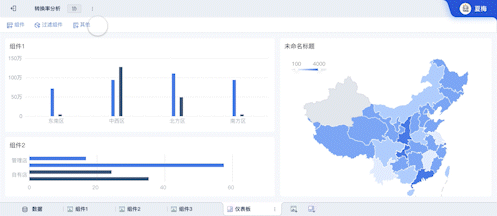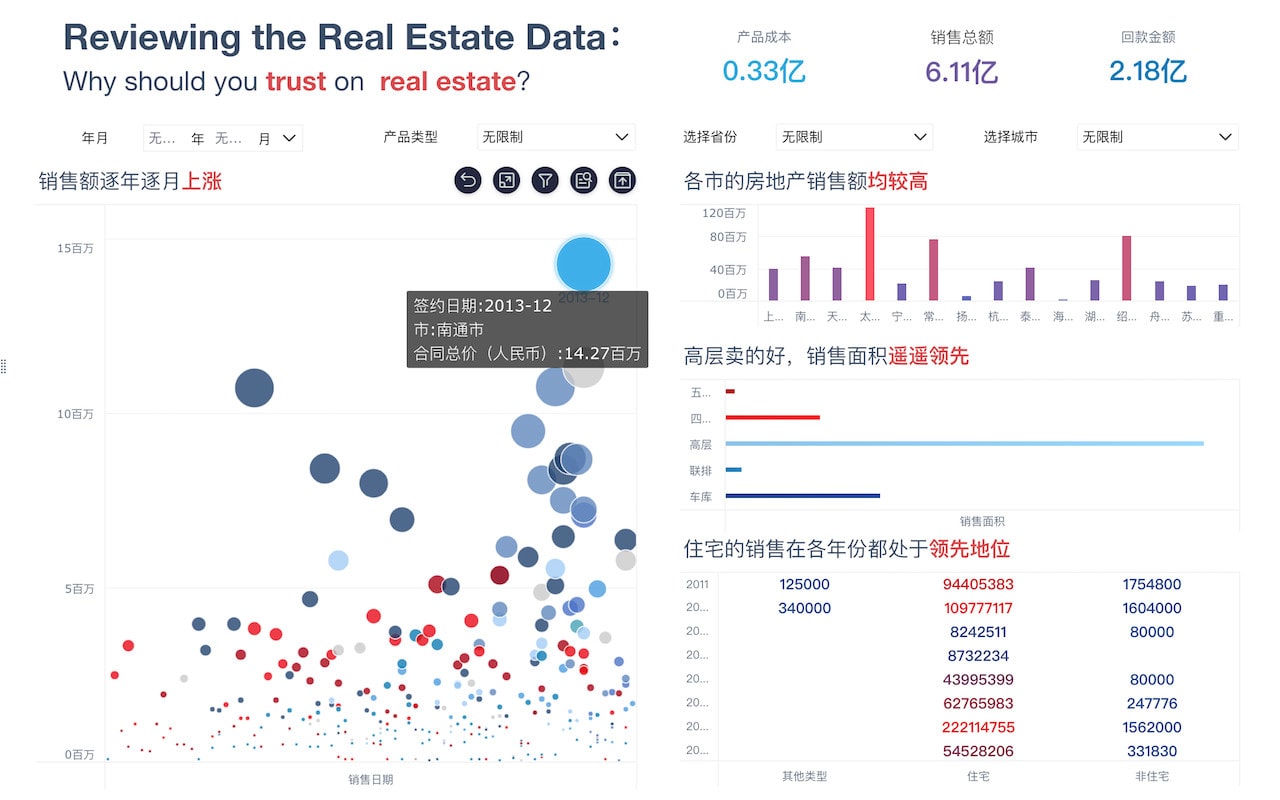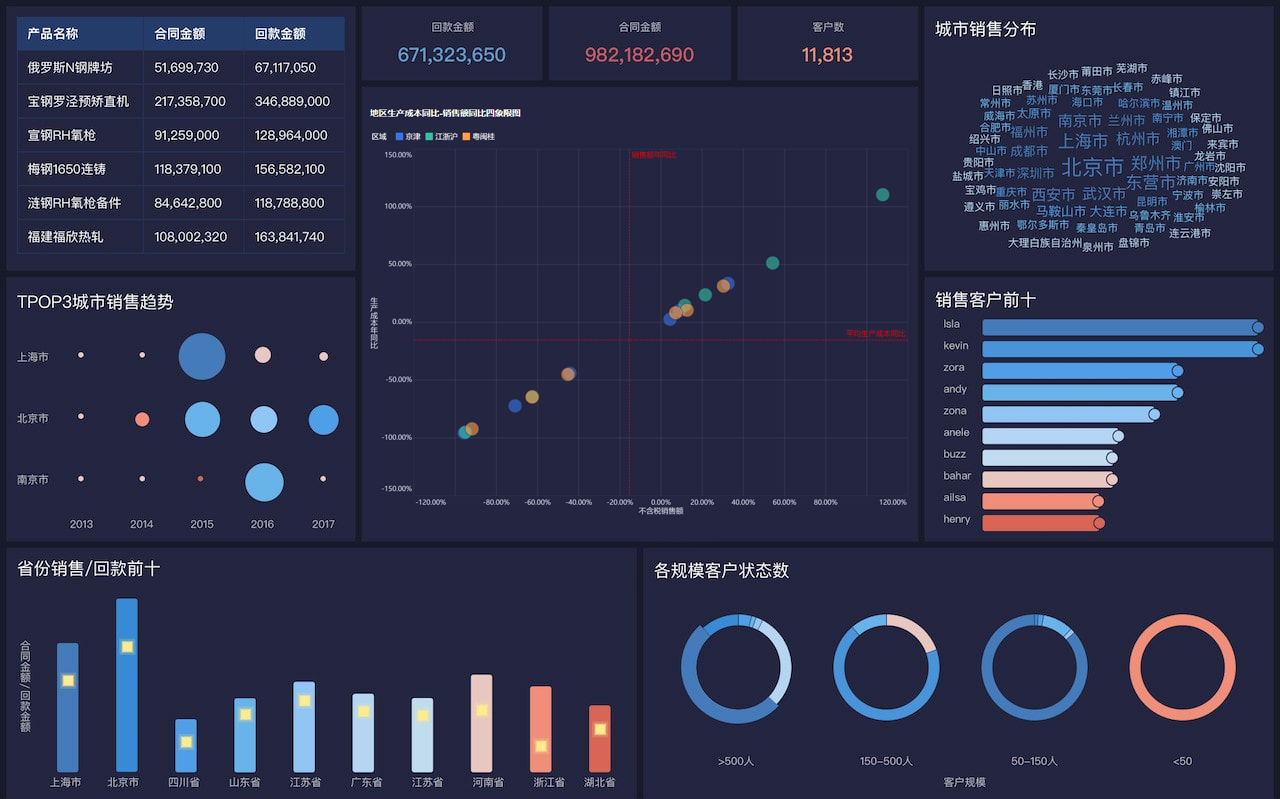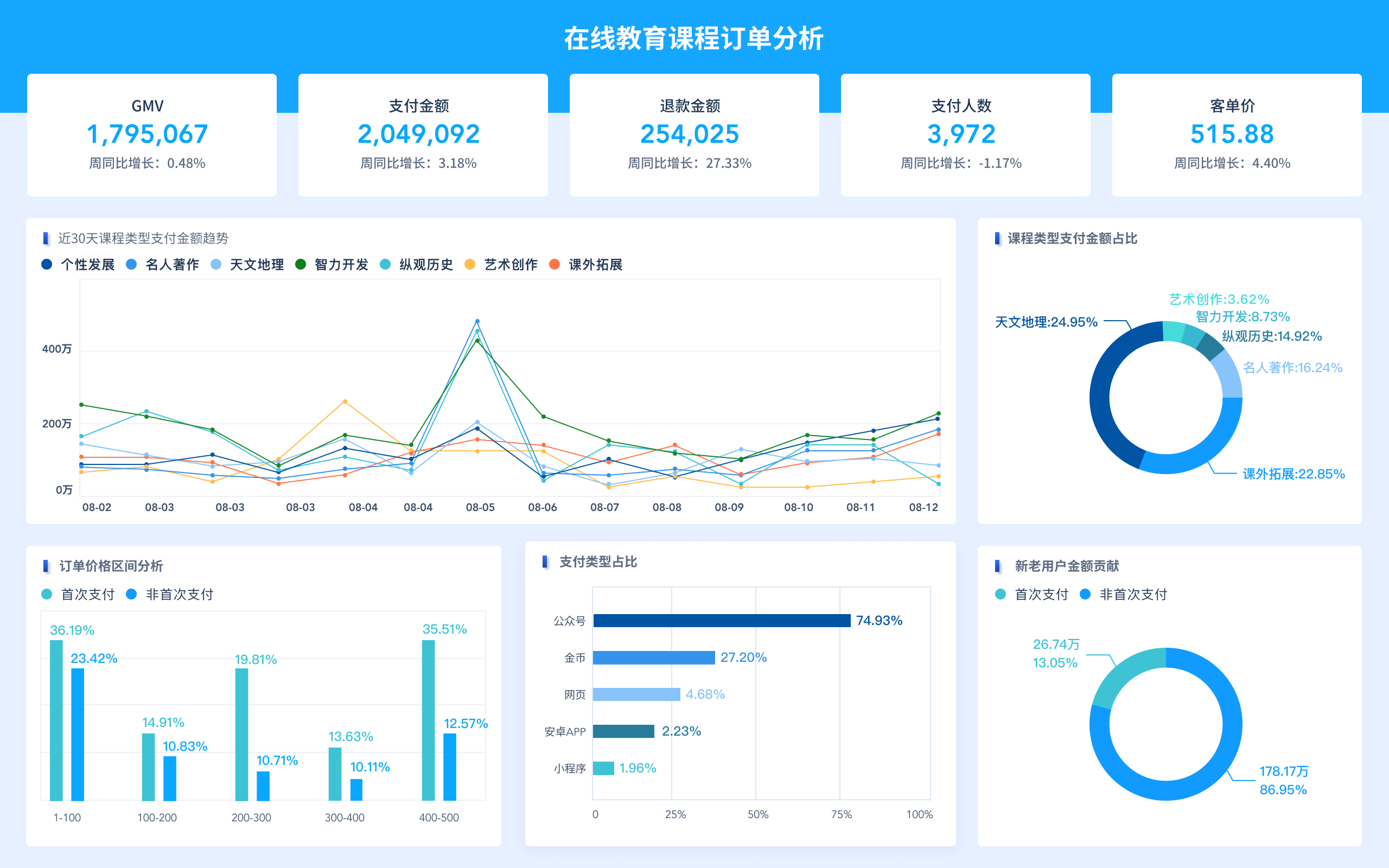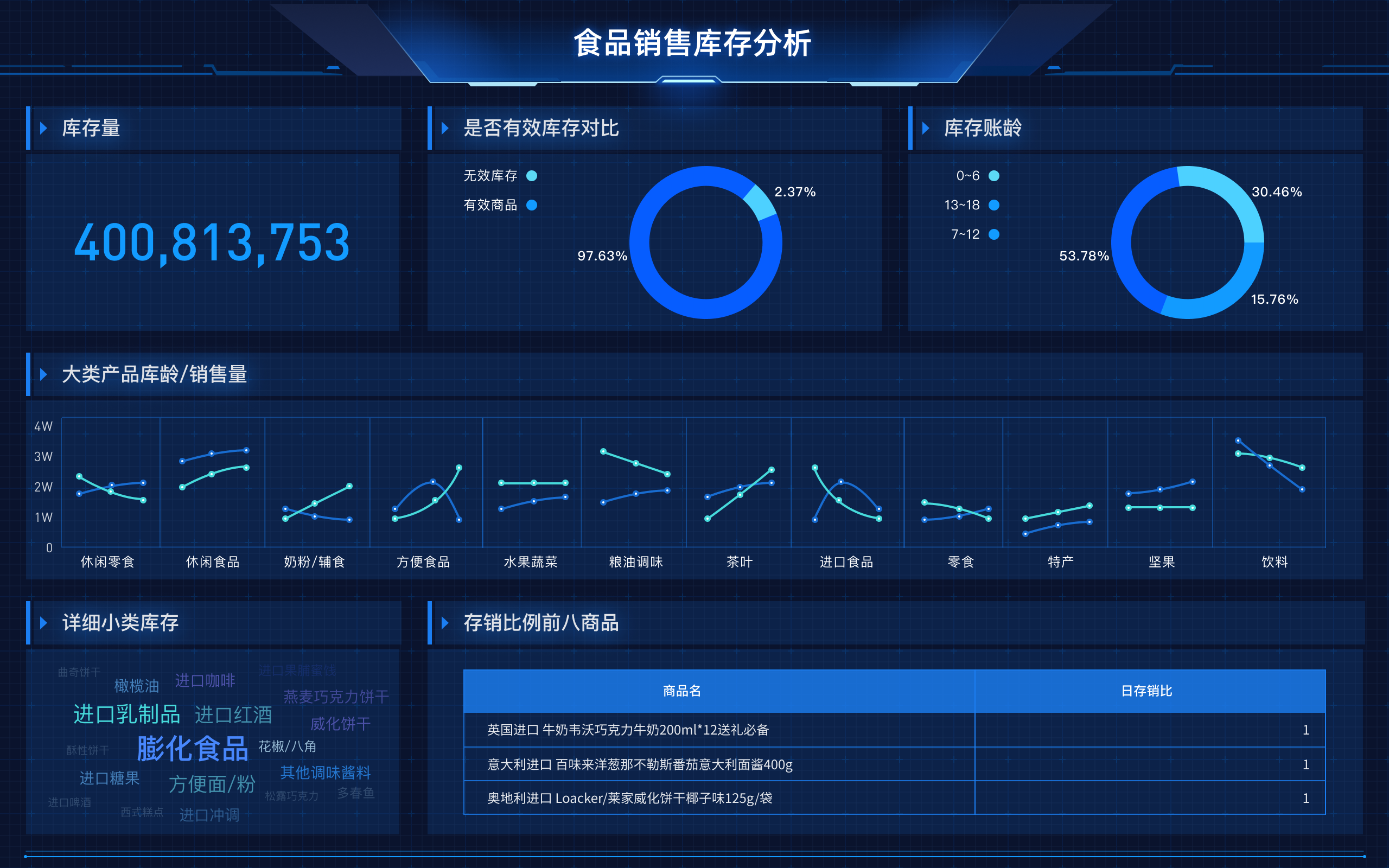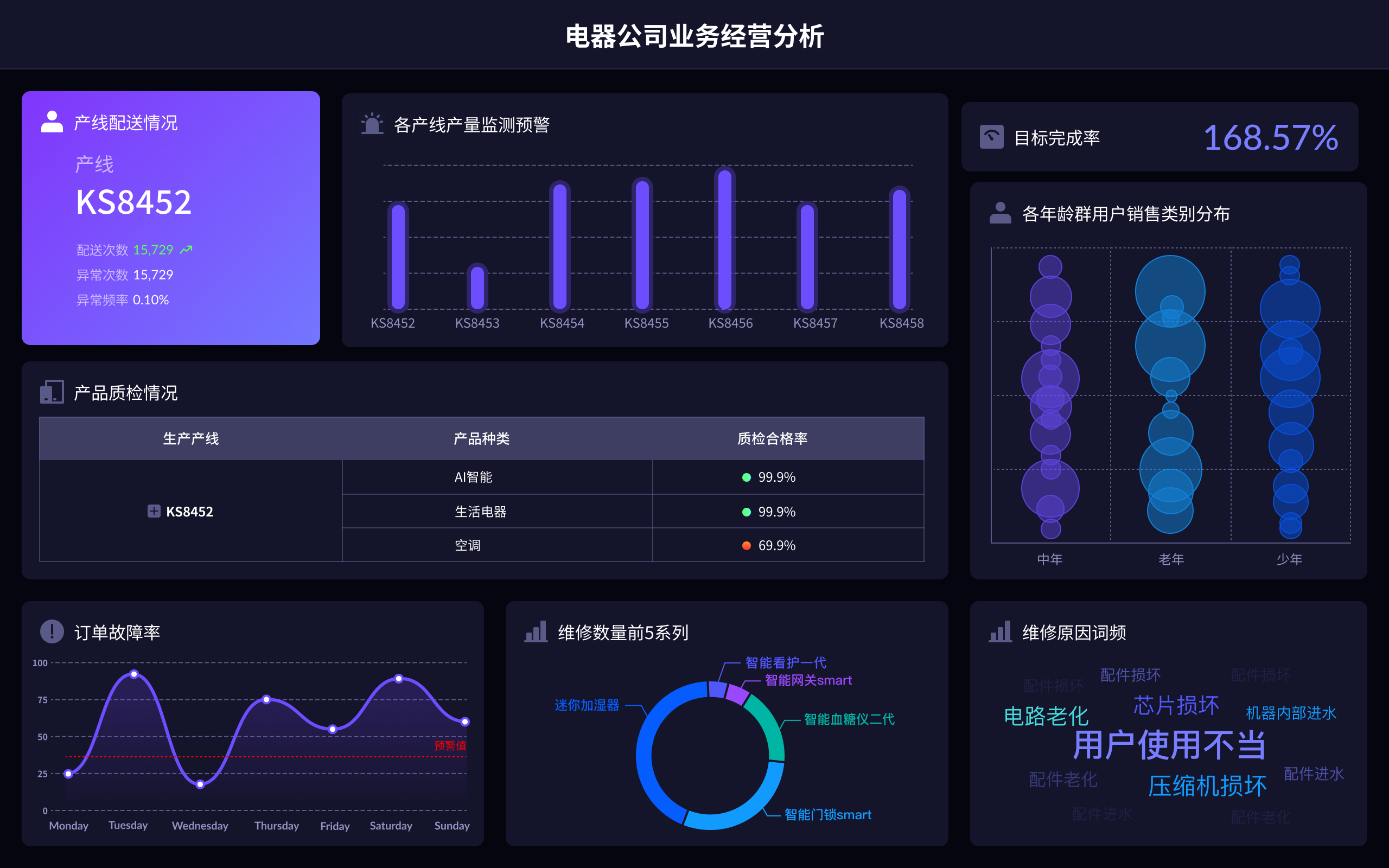
数据仓库具有四大特点:主题性、集成性、稳定性、时变性。首先,数据仓库的主题性体现在其围绕特定的主题来组织数据,而不是按业务流程进行组织。这种主题导向的数据组织方式,使得数据仓库能够更好地支持决策分析活动。数据仓库的数据是从不同的源系统中抽取、转换并加载到数据仓库中的,确保了数据的一致性和准确性,这就是集成性的体现。稳定性指的是数据仓库中的数据一旦进入便不会轻易更改,确保了数据的历史性记录和分析数据的可靠性。时变性则反映了数据仓库中数据的时间变化特性,数据是有时间戳的,能够记录数据在不同时间点的状态。
一、主题性、数据围绕主题组织
数据仓库中的数据是以主题为中心组织的,这与事务处理系统中以业务流程为导向的方式有很大的不同。在数据仓库中,主题是指某一特定领域的集合,如客户、产品、销售等。通过围绕主题来组织数据,数据仓库能够提供一种更为直观的方式来分析和理解数据。例如,在销售主题下,用户可以很容易地获取与销售相关的所有数据,如销售额、销售趋势、销售渠道等,这种主题性的数据组织方式大大提高了数据的可访问性和分析效率。
主题性不仅方便了数据的管理,还增强了数据的分析能力。用户可以通过主题来查询相关数据,而不需要考虑数据的来源和格式,这使得数据分析变得更加简单和高效。此外,主题性的数据组织方式也使得数据仓库能够更好地支持跨部门的综合分析,因为不同部门的数据被整合在同一个主题下,可以方便地进行关联分析。例如,财务部门和销售部门的数据可以在销售主题下进行整合分析,从而提供更加全面的决策支持。
二、集成性、数据一致性和准确性
数据仓库的集成性体现在其将来自不同源系统的数据进行整合,确保数据的一致性和准确性。在企业中,数据通常分布在多个不同的系统中,这些系统可能使用不同的数据格式、数据结构和数据标准,导致数据不一致和不准确。为了在数据仓库中实现数据的一致性和准确性,需要对数据进行抽取、转换和加载(ETL)处理。
在ETL过程中,数据仓库从各个源系统中抽取数据,并进行必要的转换,以确保数据的一致性和标准化。这包括数据的清洗、过滤、格式转换、去重等操作。通过这些操作,数据仓库能够消除不同系统之间的差异,使得数据在仓库中呈现出一致的视图,保证了数据的准确性。集成性不仅提高了数据的质量,还增强了数据的可用性,因为用户可以在数据仓库中访问到经过整合和标准化的数据,进行更为准确和可靠的分析。
数据的集成性还促进了数据的共享和复用。通过将不同系统的数据整合在一起,数据仓库为企业提供了一个统一的数据视图,方便不同部门和用户之间的数据共享。这种集成性的数据组织方式,可以有效减少数据冗余,降低数据管理的复杂性,提高数据的利用效率。
三、稳定性、历史数据的保持
数据仓库的稳定性体现在数据一旦进入仓库便不会轻易更改,这确保了数据的历史性记录和分析数据的可靠性。在事务处理系统中,数据是实时更新的,而数据仓库中的数据则是相对静态的,这种稳定性使得数据仓库能够记录数据的历史变化,为企业的长期决策提供依据。
由于数据仓库中的数据是稳定的,不会频繁更新,这使得用户可以随时回溯到特定时间点的数据状态,进行历史分析。这种历史数据的保持,为企业的趋势分析、预测分析和决策支持提供了重要的数据基础。例如,企业可以通过分析历史销售数据,预测未来的销售趋势,为生产和库存决策提供支持。
稳定性还提高了数据分析的可靠性。在数据仓库中,数据被设计为只读的,这使得用户在进行分析时,不必担心数据被其他事务或用户修改,从而保证了分析结果的准确性和一致性。这种稳定性的数据环境,为企业提供了一个可靠的分析平台,支持企业的战略决策和业务优化。
四、时变性、数据的时间变化特性
数据仓库的时变性反映了数据随着时间的推移而发生变化的特性。在数据仓库中,数据通常是有时间戳的,这意味着每条数据都记录了其在某一特定时间点的状态。这种时变性使得数据仓库能够对数据的历史变化进行跟踪和分析,为企业的时间序列分析提供支持。
时变性在数据仓库中扮演着重要的角色,因为它使得企业能够进行趋势分析、变化检测和时间序列预测。例如,企业可以通过分析不同时间点的销售数据,识别出销售趋势和季节性变化,为市场营销和产品开发提供依据。时变性的数据还可以用于变化检测,帮助企业及时发现和应对市场变化和客户需求的变化。
时变性还为企业的历史报告和审计提供了重要的数据支持。在数据仓库中,数据的时间变化信息被详细记录,这使得企业能够生成准确的历史报告,满足合规和审计的需求。此外,时变性的数据还可以用于绩效评估和业务优化,帮助企业识别出业务流程中的瓶颈和改进机会。
总结而言,数据仓库的四大特点——主题性、集成性、稳定性和时变性,使其成为企业进行数据分析和决策支持的重要工具。通过围绕主题组织数据,确保数据的一致性和准确性,保持数据的历史稳定性,并记录数据的时间变化特性,数据仓库为企业提供了一个强大的数据分析平台,支持企业的战略决策和业务优化。
相关问答FAQs:
What are the four main characteristics of a data warehouse?
A data warehouse is a crucial component in data management and analytics, serving as a centralized repository for integrating and analyzing large volumes of data from various sources. The four main characteristics that define a data warehouse include:
-
Subject-Oriented: Data warehouses are designed to provide a comprehensive view of specific subjects or areas of interest, such as sales, finance, or customer data. This subject-oriented approach allows organizations to analyze data in a way that is relevant to their business needs, facilitating better decision-making and strategic planning.
-
Integrated: Data warehouses consolidate data from multiple sources, including transactional databases, external data feeds, and other systems. This integration ensures that data is consistent and unified, enabling organizations to have a single version of the truth. Data is transformed, cleansed, and formatted during the ETL (Extract, Transform, Load) process, which enhances data quality and reliability.
-
Time-Variant: A key feature of data warehouses is their ability to store historical data over time. This time-variant characteristic allows organizations to analyze trends, patterns, and changes in data across different time periods. By maintaining historical records, data warehouses support time-based queries, enabling users to gain insights into how business performance evolves.
-
Non-Volatile: Data in a data warehouse is non-volatile, meaning that once it is entered into the system, it is not frequently changed or deleted. This stability ensures that users can rely on the data for reporting and analysis without worrying about fluctuations that might occur in operational systems. The non-volatile nature of data warehouses allows for consistent reporting and historical analysis.
How does a data warehouse differ from a traditional database?
Data warehouses and traditional databases serve different purposes and are designed to handle distinct types of data workloads. The primary differences include:
-
Purpose: Traditional databases are primarily designed for transaction processing and day-to-day operations, handling real-time data updates and queries. In contrast, data warehouses focus on analytical processing, enabling users to perform complex queries and generate reports on historical data.
-
Data Structure: Traditional databases typically utilize a normalized data structure to minimize redundancy and optimize transaction processing. Data warehouses, on the other hand, often employ a denormalized structure, which simplifies data retrieval and enhances query performance for analytical purposes.
-
Data Volume: Data warehouses are built to handle large volumes of data, often aggregating information from multiple sources over extended periods. Traditional databases may be limited in their capacity to manage vast amounts of historical data due to their focus on current transactions.
-
Query Performance: In a traditional database, the emphasis is on fast read and write operations for transaction processing. Data warehouses are optimized for read-heavy operations, allowing for complex analytical queries that require significant computation and data aggregation.
What are the benefits of using a data warehouse for businesses?
Implementing a data warehouse offers numerous benefits for businesses looking to leverage their data for strategic advantage. Some of the key advantages include:
-
Improved Decision-Making: By providing a centralized repository of integrated and historical data, data warehouses enable organizations to make informed decisions based on accurate insights. With access to comprehensive reports and analytical tools, stakeholders can identify trends, forecast outcomes, and devise strategies that enhance business performance.
-
Enhanced Data Quality: The ETL process involved in data warehousing ensures that data is cleansed, transformed, and standardized, resulting in higher data quality. Accurate and reliable data is essential for effective analysis and reporting, reducing the risk of errors that can arise from inconsistent or incomplete information.
-
Faster Query Performance: Data warehouses are optimized for complex queries and analytical workloads, allowing users to retrieve insights quickly. This performance enhancement is critical for organizations that require timely information to respond to market changes and customer needs.
-
Historical Analysis: The ability to store and analyze historical data provides organizations with valuable insights into performance trends over time. This historical perspective enables businesses to evaluate the effectiveness of past strategies, understand customer behavior, and make data-driven adjustments for future initiatives.
-
Scalability: As businesses grow and data volumes increase, data warehouses can be scaled to accommodate additional data sources and user requirements. This scalability ensures that organizations can continue to leverage their data assets without compromising performance or accessibility.
With these characteristics, differences from traditional databases, and benefits in mind, organizations can make informed decisions about implementing and utilizing data warehouses to gain a competitive edge in their industries.
本文内容通过AI工具匹配关键字智能整合而成,仅供参考,帆软不对内容的真实、准确或完整作任何形式的承诺。具体产品功能请以帆软官方帮助文档为准,或联系您的对接销售进行咨询。如有其他问题,您可以通过联系blog@fanruan.com进行反馈,帆软收到您的反馈后将及时答复和处理。


